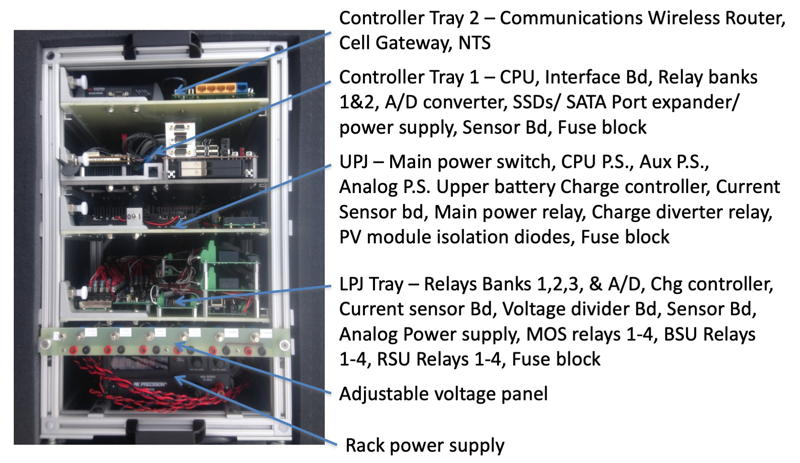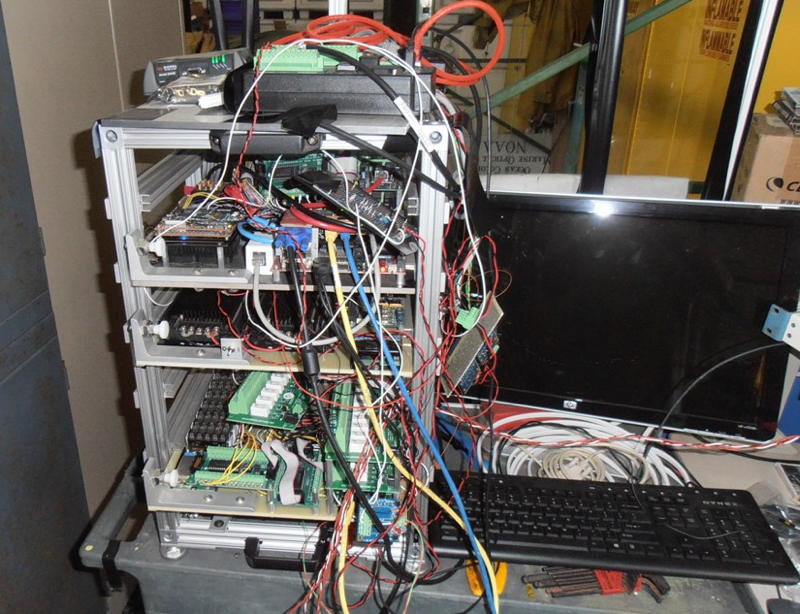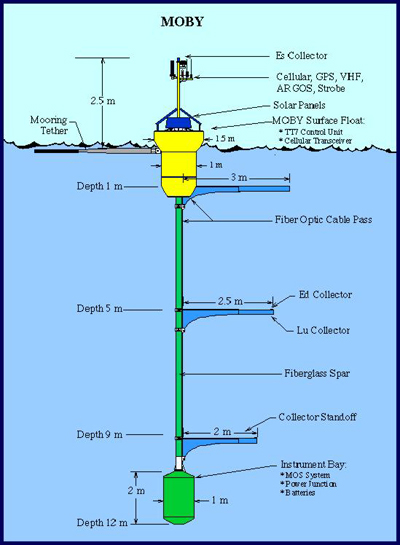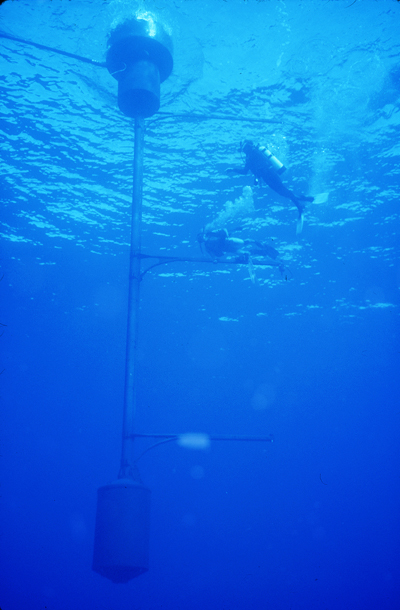MOBY - the Marine Optical BuoY
The MOBY project has been providing vicarious calibration data for ocean color remote sensing satellite imagery for over 20 years. Vicarious calibration is particularly important for ocean color remote sensing because the water-leaving radinace from the surface of the ocean is a small signal relative to that contributed by scattering in the overlying atmosphere. Since the atmospheric correction required to retrieve the ocean signal is so large, small errors in the top-of-the-atmosphere (TOA) radiance measured by the satellite translate to large errors in estimated water-leaving radinace.
Pre-launch sensor calibration is not stable enough to maintain the desired (TOA) radiance accuracy (~0.5%) over time. MOBY was desigend to address this problem by providing data to perform vicarious calibration. Sensors on the MOBY buoy measure downwelling and upwelling radiance in the water column. These measurments are subjected to rigid quality control procedure, calibrated against National Institute of Standards and Technology (NIST) standards, and processed to produce a time-series of normalized water-leaving radince and other products. These are archived at NOAA's CoastWatch data portal.
Several aspects of the MOBY program have contributed to its long-term success. By incorporating 3 arms to measure diffuse attenuation coefficient, the measurement strategy is a very sensitive measure of relative calibrations and is inherently redundant. Dedicated long-term personnel focused on QC/data reduction, calibration/characterization, and engineering/site management has led to smooth operations and consistent data. A close collaboration with NIST has enabled continual improvement in data products over time.
MOBY's success over time has led to a new problem which is its aging parts! MOBY was operationally deployed in Hawaii in 1997, but the first prototype was fielded in 1993, and development of the MOS (Marine Optical Sensor), which is the instrument aboard MOBY that makes the measurements, begain in 1985. In short, the technology aboard the buoy is showing its age, and it has become impossible to source spare parts for many components. Thus, the MOBY-refresh project is underway to replace not only the MOS with a new optical system but also to replace the communications and control systems within the buoy itself. My role in all of this has been software development for both the buoy control system as well as data acquisition and storage. The figures below show the componets of the new MOBY controller under development.
 Figure 1: New MOBY controller development rack.
Figure 1: New MOBY controller development rack.
 Figure 2: New MOBY controller development rack in use!
Figure 2: New MOBY controller development rack in use!


 ART GLEASON | Ocean Optics
ART GLEASON | Ocean Optics